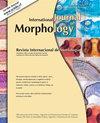covid -19后个体大脑结构改变:一项系统综述
IF 0.5
4区 医学
Q4 ANATOMY & MORPHOLOGY
引用次数: 0
摘要
虽然COVID-19主要被认为是一种呼吸系统疾病,但人们已经观察到它会影响包括神经系统在内的其他身体系统。虽然有几项研究调查了covid -19后大脑结构的解剖变化,如体积或厚度,但没有使用成像技术对这些变化进行全面的回顾,以全面理解。本研究的目的是系统分析通过神经影像学观察到的COVID-19后大脑变化的文献。我们根据PRISMA指南使用Web of Science、Scopus、Medline、Pubmed、Sciencedirect和LitCOVID进行了系统评价。我们选择的研究包括COVID-19发展期间或之后的成年患者,对照组或感染前图像,以及使用神经影像学进行形态测量。我们使用MSQ量表提取每项研究的样本特征、测量的解剖结构、成像技术、主要结果和方法学质量等信息。在确定的1126篇文章中,我们纳入了19篇,包括1155例病例和1284例对照。这些研究结果表明,嗅球体积变小,皮质和边缘结构的体积和厚度增加或减少。研究表明,大脑会在covid -19后发生变化,主要特征是嗅球变小。此外,由于炎症或神经可塑性,皮质和边缘的体积和厚度可能会发生变化,但这些发现并不确定。这些差异可归因于研究之间的方法、地理和时间差异。因此,需要进行更多的研究,以对证据提供更全面和定量的看法。本文章由计算机程序翻译,如有差异,请以英文原文为准。
Structural Brain Alterations in Individuals Post-COVID-19: A Systematic Review
Although COVID-19 is primarily considered a respiratory pathology, it has been observed to impact other bodily systems, including the nervous system. While several studies have investigated anatomical changes in brain structures, such as volume or thickness post-COVID-19, there are no comprehensive reviews of these changes using imaging techniques for a holistic understanding. The aim of this study was to systematically analyze the literature on brain changes observed through neuroimaging after COVID-19. We conducted a systematic review according to PRISMA guidelines using Web of Science, Scopus, Medline, Pubmed, Sciencedirect, and LitCOVID. We selected studies that included adult patients during or after COVID-19 development, a control group or pre-infection images, and morphometric measurements using neuroimaging. We used the MSQ scale to extract information on sample characteristics, measured anatomical structures, imaging technique, main results, and methodological quality for each study. Out of 1126 identified articles, we included 19 in the review, encompassing 1155 cases and 1284 controls. The results of these studies indicated a lower volume of the olfactory bulb and variable increases or decreases in cortical and limbic structures' volumes and thicknesses. Studies suggest that brain changes occur post-COVID-19, primarily characterized by a smaller olfactory bulb. Additionally, there may be variations in cortical and limbic volumes and thicknesses due to inflammation or neuroplasticity, but these findings are not definitive. These differences may be attributed to methodological, geographical, and temporal variations between studies. Thus, additional studies are required to provide a more comprehensive and quantitative view of the evidence.
求助全文
通过发布文献求助,成功后即可免费获取论文全文。
去求助
来源期刊

International Journal of Morphology
ANATOMY & MORPHOLOGY-
CiteScore
0.90
自引率
20.00%
发文量
110
审稿时长
3-8 weeks
期刊介绍:
The International Journal of Morphology (Revista Internacional de Morfología) (Print ISSN 0717-9367; Online ISSN 0717-9502) is an official publication of the Chilean Society of Anatomy, Argentine Association of Anatomy and Panamerican Association of Anatomy. It is the continuation of Revista Chilena de Anatomía (Chilean Anatomical Journal) and is published bimonthly. The six issues published yearly constitute one volume. This journal covers morphology in all its aspects, Gross Anatomy, Histology and Developmental Biology, as well as human and animals morphological aspects, including Celular, Molecular, systems or Evolutionary Biology. Reviews, short and brief communications and Letters to the Editor are also accepted.
 求助内容:
求助内容: 应助结果提醒方式:
应助结果提醒方式:


